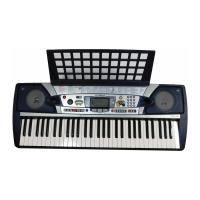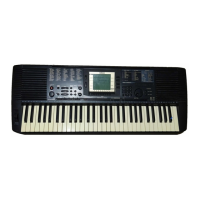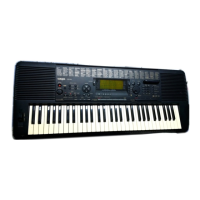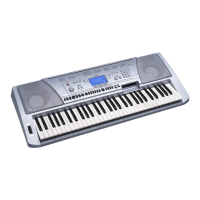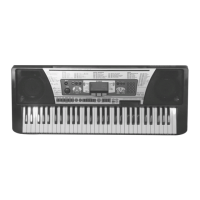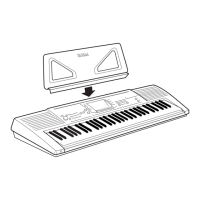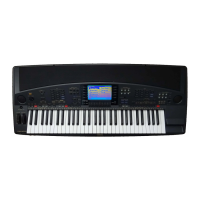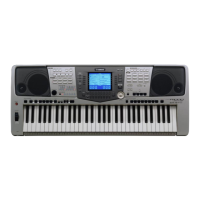How to fix a Yamaha Musical Instrument style that doesn't sound right?
- RRonald OwenAug 17, 2025
Make sure that the Style Volume (page 42) is set to an appropriate level, and ensure that the Split Point (page 27) is set to an appropriate value.
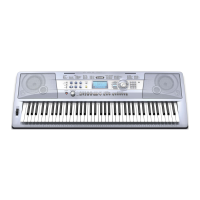
How to fix a Yamaha Musical Instrument style that doesn't sound right?
Make sure that the Style Volume (page 42) is set to an appropriate level, and ensure that the Split Point (page 27) is set to an appropriate value.
Why does my Yamaha Portatone PSR-292 Musical Instrument make noise when I use my mobile phone?
Using a mobile phone in close proximity to the Yamaha Musical Instrument may cause interference, resulting in noise. To prevent this, either turn off your mobile phone or use it further away from the instrument.
What to do if there is no sound from my Yamaha Musical Instrument?
First, check that nothing is connected to the PHONES/OUTPUT jack on the rear panel. Also, check the Local Control on/off. (See page 69.)
Why does the sound cut off on my Yamaha Portatone PSR-292 Musical Instrument?
The Yamaha Musical Instrument is polyphonic up to a maximum of 32 notes. If the Dual voice or Split voice is being used and a style or song is playing back at the same time, some notes/sounds may be omitted (or “stolen”) from the accompaniment or song.
Why does the sound on my Yamaha Musical Instrument sound strange?
The sound may seem unusual if the battery power is too low. Replace the batteries to resolve this issue. (See page 10.)
What to do if the auto accompaniment doesn't turn on my Yamaha Musical Instrument?
Make sure the Style mode is active before using the auto accompaniment. Press the [STYLE] button to enable style operations.
Why does the footswitch on my Yamaha Portatone PSR-292 Musical Instrument produce the opposite effect?
The polarity of the footswitch may be reversed. Make sure that the footswitch plug is properly connected to the SUSTAIN jack before turning on the power.
Why does my Yamaha Portatone PSR-292 make a popping sound when turned on or off?
This is normal and indicates that the Yamaha Musical Instrument is receiving electrical power.
Why does the sound of the voice change from note to note on my Yamaha Musical Instrument?
The AWM tone generation method uses multiple recordings (samples) of an instrument across the range of the keyboard; thus, the actual sound of the voice may be slightly different from note to note.
Why can't I hear the rhythm when playing Pianist styles on my Yamaha Portatone PSR-292?
This is normal. The Pianist styles have no drums or bass — only piano accompaniment.
| Brand | Yamaha |
|---|---|
| Model | Portatone PSR-292 |
| Category | Musical Instrument |
| Language | English |
Warnings about using correct voltage, specified adaptors, and cord care.
Warning against prolonged high volume use to prevent permanent hearing loss.
Describes the Portable Grand Piano Voice using AWM tone generation.
Explains expressive control over voices with Dynamic Filter.
Feature for automatically selecting style/voice/effect settings by genre.
Details of power, volume, voice, style, and other function buttons.
Details on using AC adaptor or batteries and turning the unit on/off.
Instructions for connecting the AC power adaptor safely.
Instructions for using and replacing the six required batteries.
Procedure for turning the instrument on and off.
How to select and play the Grand Piano and use the metronome.
How to select and play instrument voices using buttons and the dial.
Guide to using the dictionary to learn chord names and fingerings.
Instructions for activating and playing the DJ voice and style.
How to play the demo song and select/play other songs.
Step-by-step guide to recording custom songs using user tracks.
How to use the database to set up styles and voices by genre.
How to instantly select the special Stereo Sampled Piano voice.
How to set tempo and use the metronome for practice.
How to activate and play DJ styles and associated voices.
How to select and play individual instrument voices using the panel.
Using the dial, numeric keypad, or +/- buttons to select voices.
How OTS automatically selects voices to match styles or songs.
How to layer two voices for a richer, combined sound.
How to assign different voices to left and right keyboard areas.
How to select preset One Touch Settings for styles.
How to save personalized voice and style combinations.
How to change the overall key of the instrument.
How to control volume dynamically and adjust keyboard response.
Adds harmonies to melodies based on chords played.
Adds pitch modulation for richer, warmer sound.
Simulates ambient sound environments like rooms or halls.
Provides distortion, chorus, and other dynamic sound modifications.
How to choose from the 135 available rhythm and accompaniment styles.
Explains how to use buttons like ACMP, Sync Start/Stop, Intro/Ending.
Methods for starting styles using START/STOP, Tap Tempo, or Sync Start.
How to enable the auto accompaniment feature.
How to pause/stop styles by releasing keys in the accompaniment area.
How to adjust the playback speed (BPM) of styles.
How to control accompaniment using Single Finger or Fingered chord methods.
How to look up chord names and see their notes on the keyboard.
How to choose a genre to automatically set up the instrument.
Demonstrates selecting a Music Database entry and playing the song.
Explains buttons for Start/Stop, Pause, Rewind, Fast Forward.
How to choose from preset songs, demo, or user songs.
How to set start/end points for repeating song sections.
How to make initial settings before recording a song.
Step-by-step procedure for starting and stopping the recording process.
How to erase all recorded data from a selected user song.
How to erase data from a specific track while leaving others intact.
Introduction to the four-step lesson system for practicing songs.
Explanation of MIDI technology and how digital instruments produce sound.
Instructions for connecting via MIDI interface or USB.
How to save songs from a computer to the keyboard's internal memory.
How to reconfigure MIDI settings for external devices.
Solutions for popping sounds, noise, and no sound issues.
Procedure to restore the instrument to its factory default settings.
